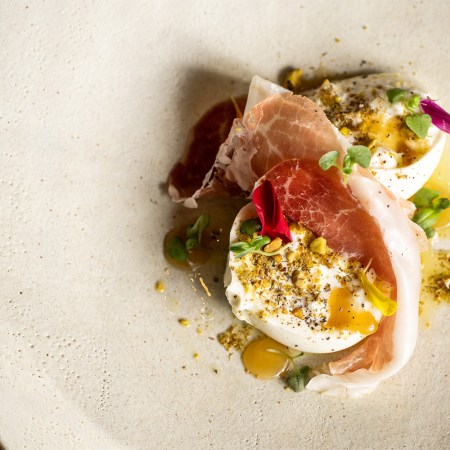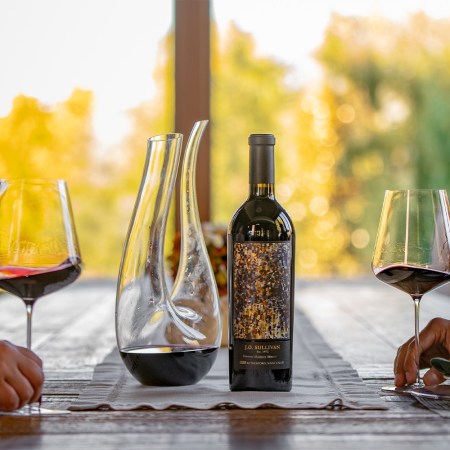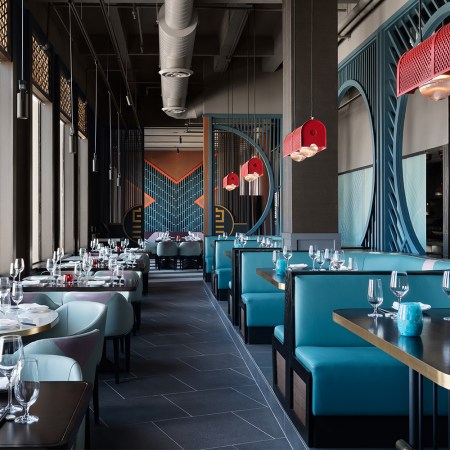When Chef Charles Phan decided to bring rich, creamy Vietnamese coffee to San Francisco, he never expected he would need to journey to India to make it happen.
It all began seven years ago, with a collaboration between Phan and Kevin Bohlin of Saint Frank Coffee, who began supplying Phan’s Slanted Door seven years ago. Finding Bohlin was a challenge in and of itself, given Phan’s checklist of must-haves in a coffee supplier: ethical sourcing, top-quality ingredients and, of course, the perfect flavor.
“We tried a few different coffee roasters who are local to the Bay Area but didn’t feel their roast fit with Charles’s preferred taste,” says Michelle Mah, The Slanted Door Group’s director of operations. “Some of them were far third wave, with a very light to minimal roast, which made the coffee taste thin and very fruity/acidic.”
In Bohlin’s single-origin brews, Phan found the flavor he was looking for: fruity and fresh but still full-bodied, and without that all-too-pervasive burnt or overly roasted aroma. Perhaps most importantly, Mah explains, “Kevin was open to hearing what Charles was looking for in a flavor profile for our coffee program.”
Bohlin’s attention to Phan’s specifications and ability to respond to them may stem from his keen understanding of the growers themselves. Indeed, he is committed to cultivating true partnerships with the people on the ground, prioritizing emerging producers with potential for growth.
“It would be easier if you went to some super established, massive estate in Brazil,” he says. “But the everyday coffee farmer is just a small family producer.”
He and his team seek to be resources for these small producers from both an economic and educational standpoint, facilitating access to pre-financed fertilizer, for example, and sharing more sustainable mulching and pruning methods. The hope is that producers will become models for their communities, creating a virtuous circle of better practices that will continue whether Saint Frank’s team is on the ground or not.
“We’ll visit producers once or twice a year, right? We don’t live there,” says Bohlin. “There’s a lot of history of NGOs coming into places, giving a bunch of equipment, giving a bunch of resources, and then walking away, coming back two or three years later, and nothing has changed.” Bohlin prefers “more of a relational dynamic” in the hopes of creating lasting change for these coffee-growing communities.
Bohlin quickly became Phan’s coffee purveyor of choice at both the Slanted Door and Chuck’s Takeaway, his café specializing in sandwiches from Vietnam and beyond. But when Phan decided to start serving Vietnamese coffee — the rich, milky, über-caffeinated specialty of his youth — the pair encountered a bit of a hiccup: while Bohlin’s single-origin roasts made the perfect filter coffee, espresso or latte, for a Vietnamese coffee, his Arabica beans just wouldn’t cut it.

Robusta and Arabica are two species of the same plant, the former originally hailing from western Africa, and the latter from the east of the continent. As its name suggests, Robusta offers more robustness — both in flavor and in caffeine content. Common in mass-market coffees, Robusta is often perceived as being of lower quality than the fruitier, subtler Arabica usually preferred on the craft-coffee scene.
But Vietnamese coffee stands out from other coffee drinks on the marketplace today. Characterized by the long contact time between water and bean, Vietnamese coffee is highly caffeinated and super strong, served shaken with sweetened condensed milk for the ideal balance between creamy and heady, bitter and sweet.
“It’s a very powerful ingredient,” says Bohlin of the milk, “so with delicate, more refined Arabica coffees, it just doesn‘t work as well.”
However, while transparent, sustainable supply chains for Arabica have surged in the wake of multiple waves of craft coffee development, supply chains for Robusta beans have historically been far murkier.
“It’s just a lower-priced, lower-commodity type market approach,” says Bohlin. “It’s incredibly challenging to find clean, higher quality sources.” But after speaking with Phan, he realized that he would need to rise to the occasion to get the flavor the chef sought.
The logical next step would be to source coffee in Vietnam, which is the second-largest producer of coffee today, after Brazil, and where a whopping 95% of the production is Robusta beans. But transparency in the sector is still an issue, and Bohlin didn’t yet have on-the-ground contacts that would allow him to provide the quality standards so essential to his philosophy. But eventually, he was finally able to set a meeting with Vietnamese farmers — in March 2020.
With that partnership tabled, then, Bohlin began looking further afield. “The first goal was quality,” he says, and after tasting their way through a host of beans from around the world, he and Phan found what they needed: a natural, sun-dried Robusta from southern India is currently one of the main ingredients in the now-beloved Vietnamese coffee from Chuck’s Takeaway.
“At Chuck’s, we initially made Vietnamese drip coffee using the stainless steel coffee filter that is common and most popular in Vietnam,” says Mah. “But recently, we changed the method. We’re now pulling through an espresso machine and shake to order. We are enjoying this taste better right now and offering it hot or iced.”
Despite supply-chain issues slowing things down, Bohlin hasn’t given up hope on finding a Vietnamese supplier for the brew.
“To be honest, I’m probably going to end up smuggling this coffee into Thailand and shipping it from Thailand,” he laughs. “We’re gonna try to do it legit first, but you know, whatever it takes to get the good stuff here, traceable and fully intact. That’s the goal.”
This article was featured in the InsideHook SF newsletter. Sign up now for more from the Bay Area.






















